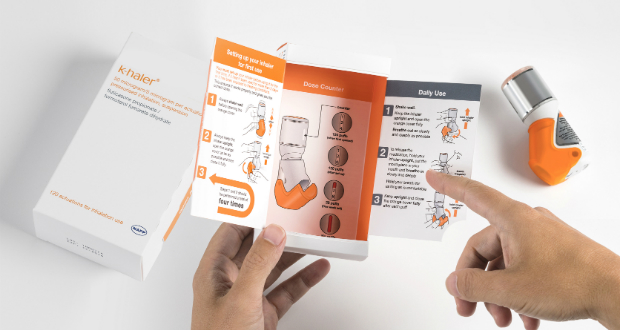
An international panel of judges heralded the innovative packaging design of Mundipharma ’s k-haler device. The design is intended to help patients use their inhalers more effectively. Impressing a 63-strong jury of design experts, the k-haler secured an iF Design Award for packaging design in the medicine/pharmaceutics category. This year the iF Design Awards attracted more than 6,400 entries from 54 countries. Precipice Design worked closely with Mundipharma International and its network of independent associated companies in developing packaging aimed at helping to address some of the day-to-day challenges faced by patients using an inhaler and improve correct device usage. k-haler has a simple breath-triggered mechanism designed to help patients with respiratory conditions manage their condition effectively. Research indicates that errors in inhaler technique are frequent, with more than 30% of patients failing to use the devices correctly. Studies also suggest that poor inhaler technique is associated with poor patient outcomes. Furthermore, ongoing training may also influence the efficiency of drug delivery, patient adherence and long-term control. Founded in 2010, Precipice Design is the firm responsible for leading the revolutionary Meaning-Centred Design technique. Meaning-Centred Design offers a new way for companies to make sense of markets and cultures and create products that people will value more. Miles Hawley, chief design officer, Precipice Design, said: “It’s fantastic that k-haler’s innovative packaging has been recognised by the iF Design Awards judging panel. We worked closely with Mundipharma to deliver a packaging solution that makes it easier for patients to use their inhaler correctly. The k-haler illustrates the power of innovative design to transform outcomes for both companies and users.” Jonathan Marshall, Mundipharma senior commercial lead, said: “We’re delighted that the k-haler device has been recognised for its innovative packaging, which is testament to the research and development that went into its design. These simple and effective patient education materials are designed with the aim to help patients use their device correctly, and therefore potentially improve their long-term outcomes.”







